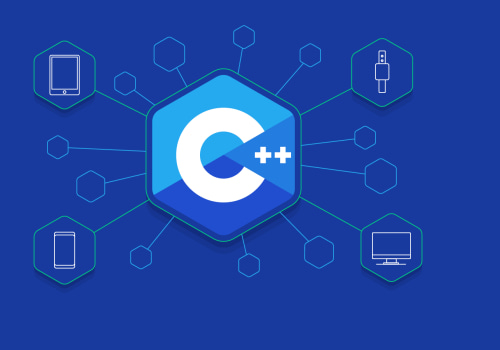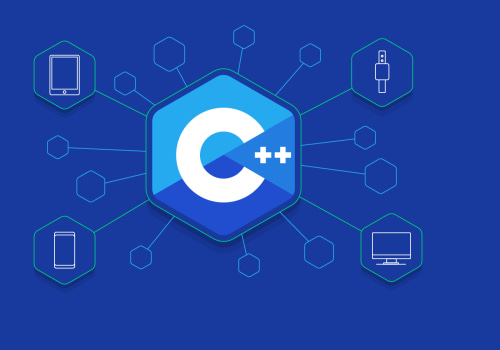Are you a programmer looking for tips on how to debug your code? Do you want to understand the process of troubleshooting and improving your coding skills? Debugging tools, such as those found on The Best Coding Tutoring Platforms, are an essential component of a programmer's toolkit and can be used to quickly identify and solve errors in code. This article will explain the basics of using a debugger tool and discuss how it can help you become a better coder. We'll also provide tips on how to use the debugger tool to troubleshoot coding problems, as well as provide examples of debugging techniques and Are you a programmer looking for tips on how to debug your code? Do you want to understand the process of troubleshooting and improving your coding skills? Debugging tools, such as those found on The Best Coding Tutoring Platforms, are an essential component of a programmer's toolkit and can be used to quickly identify and solve errors in code. This article will explain the basics of using a debugger tool and discuss how it can help you become a better coder. We'll also provide tips on how to use the debugger tool to troubleshoot coding problems, as well as provide examples of debugging techniques and common coding mistakes. With the right tools and knowledge, you can become an expert at Are you a programmer looking for tips on how to debug your code? Do you want to understand the process of troubleshooting and improving your coding skills? Debugging tools, such as those found on The Best Coding Tutoring Platforms, are an essential component of a programmer's toolkit and can be used to quickly identify and solve errors in code. This article will explain the basics of using a debugger tool and discuss how it can help you become a better coder. We'll also provide tips on how to use the debugger tool to troubleshoot coding problems, as well as provide examples of debugging techniques and common coding mistakes. With the right tools and knowledge, you can become an expert at debugging strategies and troubleshooting your code, including avoiding common coding mistakes, in no time!Are you a programmer looking for tips on how to debug your code? Do you want to understand the process of troubleshooting and improving your coding skills? Debugging tools, such as those found on The Best Coding Tutoring Platforms, are an essential component of a programmer's toolkit and can be used to quickly identify and solve errors in code. This article will explain the basics of using a debugger tool and discuss how it can help you become a better coder. We'll also provide tips on how to use the debugger tool to troubleshoot coding problems, as well as provide examples of debugging techniques and common coding mistakes. With the right tools and knowledge, you can become an expert at debugging strategies and troubleshooting your code, including avoiding common coding mistakes, in no time!
What is a Debugger Tool?
A debugger tool is a program designed to help developers find and fix errors in their code. It can be used to identify problems, investigate issues, and gain insight into how a program is running. The primary purpose of a debugger tool is to help developers identify and diagnose issues quickly and efficiently.Debugger tools can be used to analyze code, examine variables and values, step through code line by line, set breakpoints, and trace errors. Debugger tools provide valuable information about the state of a program at any given time, including line numbers, call stacks, memory usage, and threading. They can also be used to debug code on multiple platforms, such as Windows, Linux, and Mac OS. Debugger tools are commonly used in software development, game development, cybersecurity, and system administration. Using a debugger tool can make debugging easier and more efficient. By analyzing the state of the program while it's running, developers can identify problems quickly and understand the cause of the issue. Debugger tools can be used to analyze code, examine variables and values, step through code line by line, set breakpoints, and trace errors. Debugger tools provide valuable information about the state of a program at any given time, including line numbers, call stacks, memory usage, and threading. They can also be used to debug code on multiple platforms, such as Windows, Linux, and Mac OS. Debugger tools are commonly used in software development, game development, cybersecurity, and system administration. Using a debugger tool can make debugging easier and more efficient. By analyzing the state of the program while it's running, developers can identify problems quickly and understand the cause of the issue.
Debugger tools allow developers to pinpoint errors in their code and make changes that will have a positive effect on the overall performance of the program.
Types of Debugger Tools
Debugger tools come in a variety of different types, each designed to help you find and fix errors in your code. The most common types of debuggers are static debuggers, interactive debuggers, and remote debuggers.Static Debuggers
Static debuggers are programs that analyze code without actually running it. They are typically used to detect coding errors, such as syntax mistakes.Static debuggers can be used to quickly identify and fix errors in the code, without having to run the program.
Interactive Debuggers
Interactive debuggers are programs that allow you to step through code line by line. This is useful for tracking down logic errors, as it allows you to pinpoint exactly where the error is occurring. Interactive debuggers also allow you to view the values of variables at any given point in the program’s execution.Remote Debuggers Remote debuggers are programs that allow you to debug programs running on remote machines. This is useful for debugging applications that are running on servers or in the cloud. Remote debuggers allow you to debug applications without having to install a debugger on the remote machine.
How to Use a Debugger Tool
Using a Debugger Tool is an important part of the development process. It allows developers to quickly and efficiently identify and fix any errors that may be present in their code.In order to use a debugger tool, there are a few steps that need to be taken. The first step is to create a breakpoint. This is a location in the code where the debugger will stop and allow the programmer to view the values of variables at that point. The breakpoint can be placed by clicking on the line of code that is to be debugged.
Once the breakpoint is set, the debugger will then be able to be run. This can be done by selecting “Start Debugging” from the menu or by pressing the play button in the toolbar. The program will then execute until it reaches the breakpoint. At this point, it will pause and allow the programmer to view the values of any variables or examine the code.
The next step is to step through the code. This can be done by using the step over, step into, and step out buttons in the toolbar. Step over will execute the current line of code and move to the next one. Step into will execute the current line of code and then move into any functions that are called from that line of code.
Step out will execute all lines of code until it reaches the end of the current function, at which point it will return to the calling function. Another important feature of a debugger tool is debugging information. This can include things such as call stacks, variable values, and execution status. All of this information can help a programmer understand what is going on in their program and can help them identify any potential issues or errors quickly. Finally, it is important to remember that debugging tools are only as effective as the programmer using them. Being able to effectively use a debugger tool requires practice and experience, so it is important to take some time to learn how to use them correctly.
Debugging Complex Problems
Debugging complex problems can be a daunting task, but it doesn't have to be.With the help of a debugger tool, you can make the process more efficient and effective. Here are some tips for debugging complex problems with a debugger tool:1.Start by isolating the problem.When you're debugging a complex problem, it's important to start by isolating the issue. This will help you narrow down the scope of the issue, and it will make it easier to track down the source of the problem.
2.Set breakpoints and watch variables.
The debugger tool allows you to set breakpoints and watch variables. This will give you a better understanding of what is happening in your code and what is causing the problem.You can also use this information to identify potential solutions.
3.Analyze stack traces.
Stack traces are a great way to get an overview of the execution flow of your code. The debugger tool can help you analyze these stack traces and identify potential issues in your code.4.Use log statements.
Log statements are very helpful when debugging complex problems. They allow you to see what is going on in your code and can help you quickly identify potential issues. You can use log statements to print out values or objects that are causing the issue.5.Step through your code.
Stepping through your code line by line is a great way to debug complex problems.It allows you to see exactly what is happening in your code and can help you pinpoint the source of the issue. You can also use this technique to identify potential solutions.
6.Test different scenarios.
Testing different scenarios is another great way to debug complex problems. You can use the debugger tool to try different scenarios and see how they affect the results of your code. This can help you identify potential solutions quickly.Best Practices for Debugging
Debugging is a critical part of the development process, and having the right tools and techniques can help you find and fix errors quickly and efficiently.There are a few best practices you should keep in mind when debugging, such as writing tests before debugging, using automated tools, and other strategies.
Writing Tests Before Debugging:
Writing tests before debugging is a great way to ensure that your code is working properly. Writing tests allows you to identify any potential problems before you start debugging. This will save you time and make it easier to find the source of any errors.Using Automated Tools:
Automated tools can help you find and fix errors in your code quickly and efficiently.These tools can detect errors in your code, as well as provide feedback on how to fix them. Some popular automated debugging tools include unit testing frameworks, static analysis tools, and code coverage tools.
Using Breakpoints:
Breakpoints are an important tool for debugging. They allow you to stop the code execution at certain points so that you can inspect variables, view the call stack, and more. This can help you quickly identify and fix errors in your code.Using Logging:
Logging is a great way to keep track of what is happening in your code.Logging can help you identify potential errors and provide useful information about the state of your code. It's also a great way to debug multi-threaded applications, as it can provide insight into how different threads are interacting with each other.
Using Debuggers:
Debuggers are powerful tools for debugging code. They allow you to step through your code line by line so that you can analyze variables and inspect the call stack.Debuggers can also be used to set breakpoints, which can help you quickly identify and fix errors in your code. By following these best practices for debugging, you can quickly find and fix errors in your code. Writing tests before debugging, using automated tools, using breakpoints, using logging, and using debuggers are all great ways to ensure that your code is working correctly. Using a debugger tool is an essential part of the development process, as it helps you quickly and efficiently find and fix errors in your code. Different types of debugging tools are available, so it's important to choose the right one for your project.
When using a debugger tool, it's important to use best practices for debugging, such as using breakpoints and stepping through code, to ensure that your errors are properly identified and corrected. By using a debugger tool and following the best practices outlined in this article, you'll be able to quickly find and fix errors in your code.











